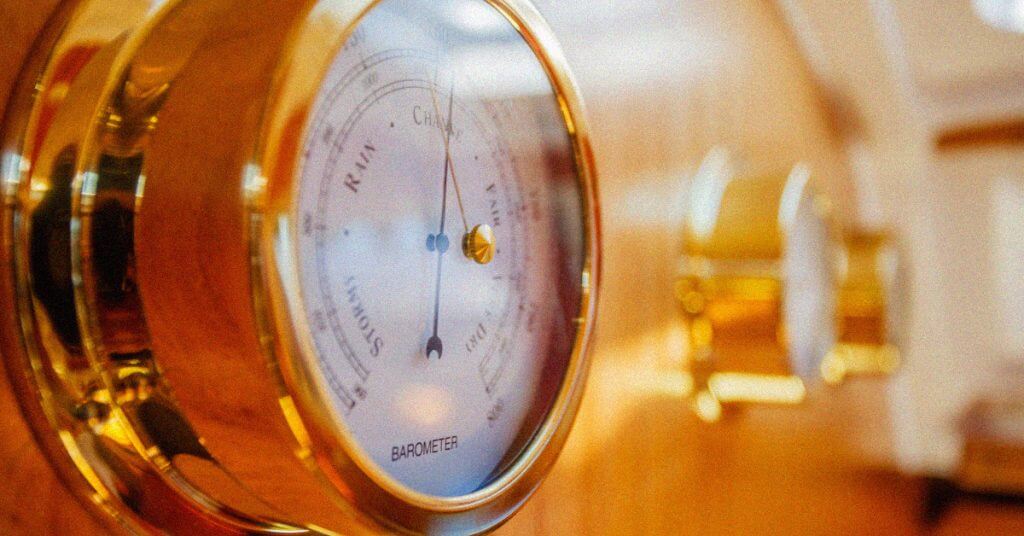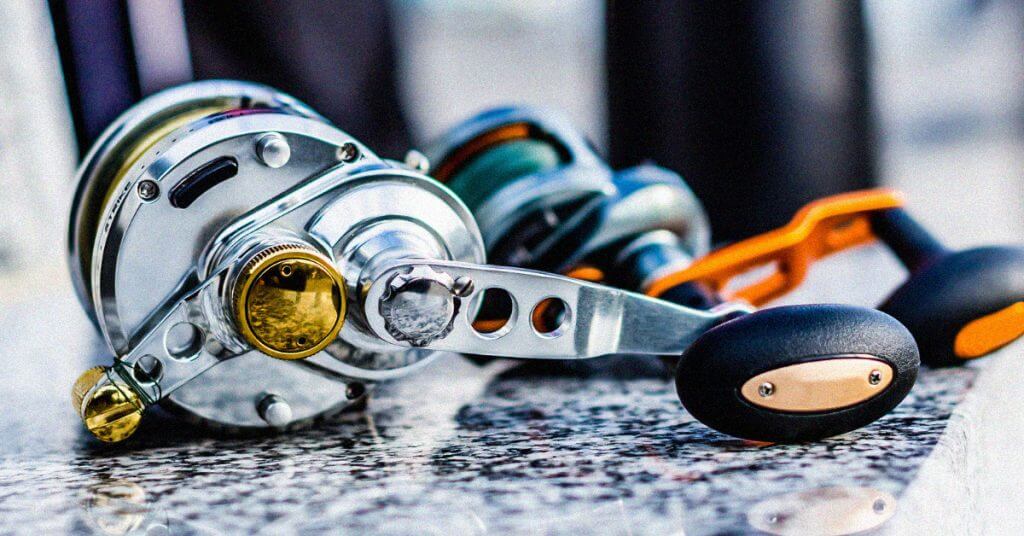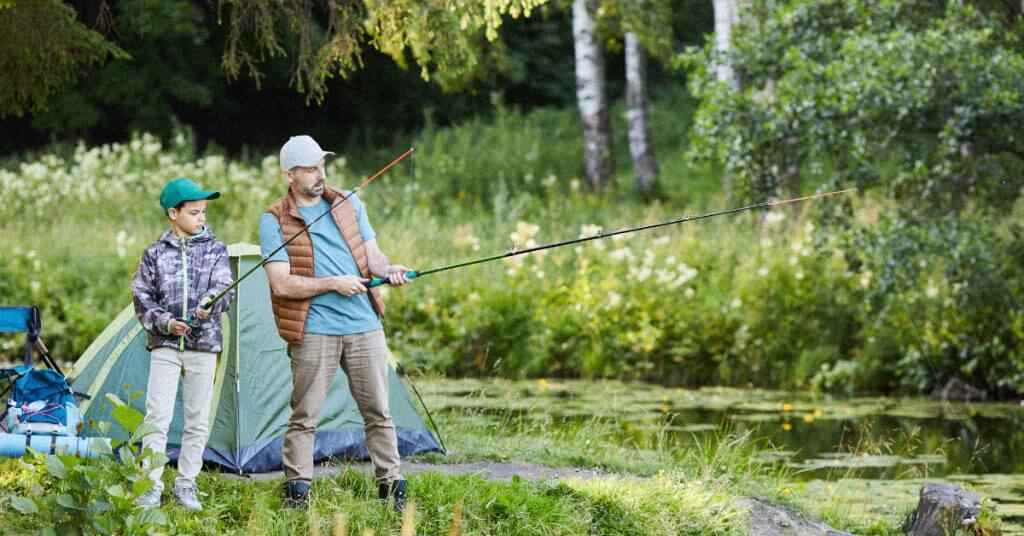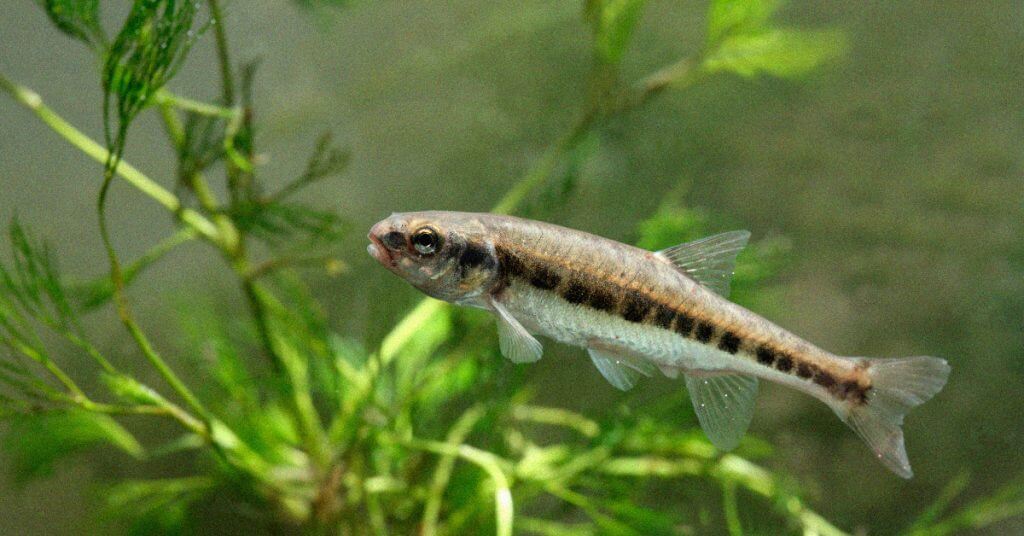Early spring is the best time for catching bass. As the first warm fronts move into the area, the bass will start waking up and moving to shallower areas. After months of remaining largely inactive, the bass start biting.
This increased activity doesn’t mean it’s a completely free-for-all, though. Early spring bass fishing can come with a few challenges of its own, especially if you live in an area where the weather tends to do weird things.
Let’s take a look at some of our top early spring bass fishing tips. These tips should teach you how to catch bass in March.
Table of Contents
5 Important Early Spring Fishing Tips
1. Understand How Cold Impacts Bass Behavior
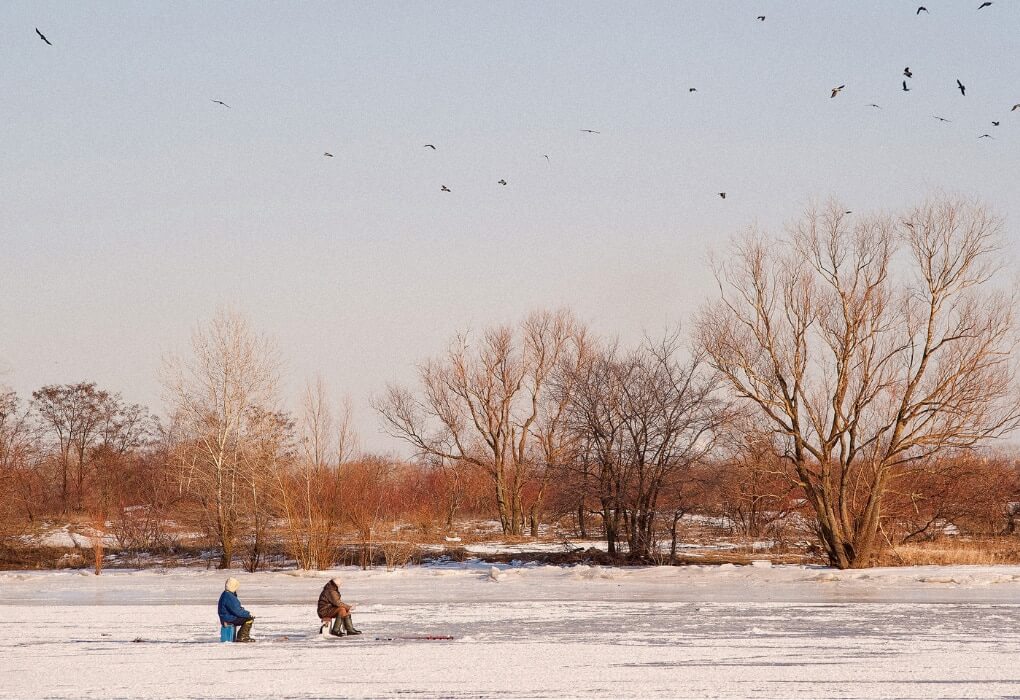
In most areas, early spring will have considerably warmer water temperatures than winter. However, that doesn’t mean that the temperature is always steady.
Cold fronts can push the water temperatures back down, and there may be a few unseasonably warm days.
Bass are driven heavily by water temperature. Therefore, we recommend keeping an eye on the water temperature. Bass will spawn at around the same temperature.
For instance, smallmouth and largemouth bass spawn around 57 degrees Fahrenheit. When the water hits this temperature, you can expect spawning behaviors to begin.
Keep an eye on the temperature to be successful at early March bass fishing.
However, bass start to become more active as the water hits 48 degrees Fahrenheit. At this time, the bass will begin feeding actively and preparing for spawning. Often, this is the time of year when very large bass are caught.
Cold water makes bass slow and lazy, so it is more difficult to get bites when the temperature drops.
The answer to “when do bass start biting in early spring” depends on your area. Bass don’t spawn during a specific time period. Instead, it’s all about water temperature.
In Texas and Florida, the fish will spawn much earlier than in more northern areas. We recommend tracking water temperature instead of worrying exclusively about the date on the calendar.
2. Start Deep, Work Shallow
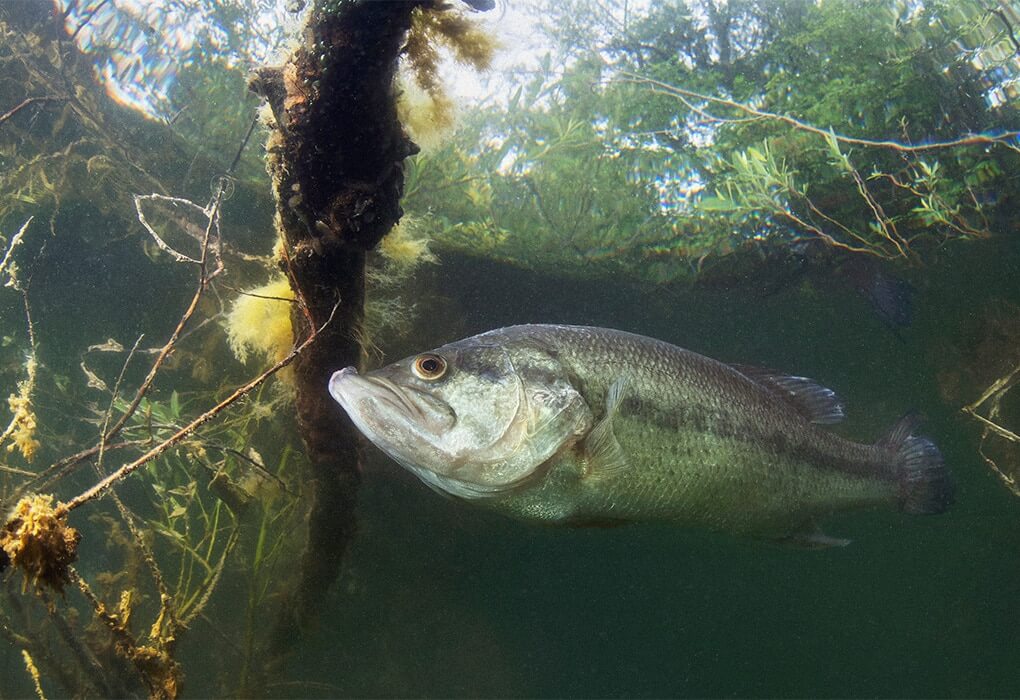
In the very first days of spring, many bass will still be suspended in deeper waters. You’ll have to fish these bass just like you would during the winter, despite it technically being “spring.”
As the waters warm up, you can expect the bass to make their way towards shallower water. The bass will feed actively before spawning.
Therefore, when the bass start moving towards shallow waters, you can expect plenty of bites.
This process isn’t linear, though. The temperature in the early spring months can vary greatly. Therefore, bass may feed for a couple of days and then head back to deeper waters when a cold front passes through.
Just because you found the bass in shallow waters one day doesn’t mean they will stay there. You’ll need to re-check the water temperature each fishing trip.
3. Use the Right Spring Bass Lures
Early spring is a bit of a strange time. Bass may be suspended in deeper waters if it is cooler, or they may be actively feeding on warmer days.
Therefore, you’ll need to have several lures on hand for different situations. You’ll likely not be able to use the same lure for every fishing trip.
Because waters tend to be a bit cooler, we recommend lures with slower actions. The lure should have a lot of stop-and-go action to encourage bites.
The bass just aren’t going to work very hard during this time. Light rolls and wobbles are the way to go.
Smaller baits also seem to work better at this time. A bass’s metabolism slows down in cooler waters. Therefore, they won’t be able to digest heavy meals.
The exact bait used isn’t terribly important. We recommend having a few different options for testing. Jigs, lipless crankbait, soft plastic, shad rap, jerkbaits, spinnerbaits, and hair jigs all work well depending on the situation.
Swimbaits and buzzbaits may even work well in some situations. As always, having a bit of finesse helps.
You may need some drop-shot lures for colder days, when the bass may be suspended. Check around drop-offs on these days, depending on the water temps.
It usually helps to stick to realistic lure colors like browns, whites, and blacks, especially in clear water. When in murky waters, you may need to add in some orange or red.
You want the bait to remain similar to the local baitfish, whether that’s crawfish or minnows.
4. Don’t Be Stubborn
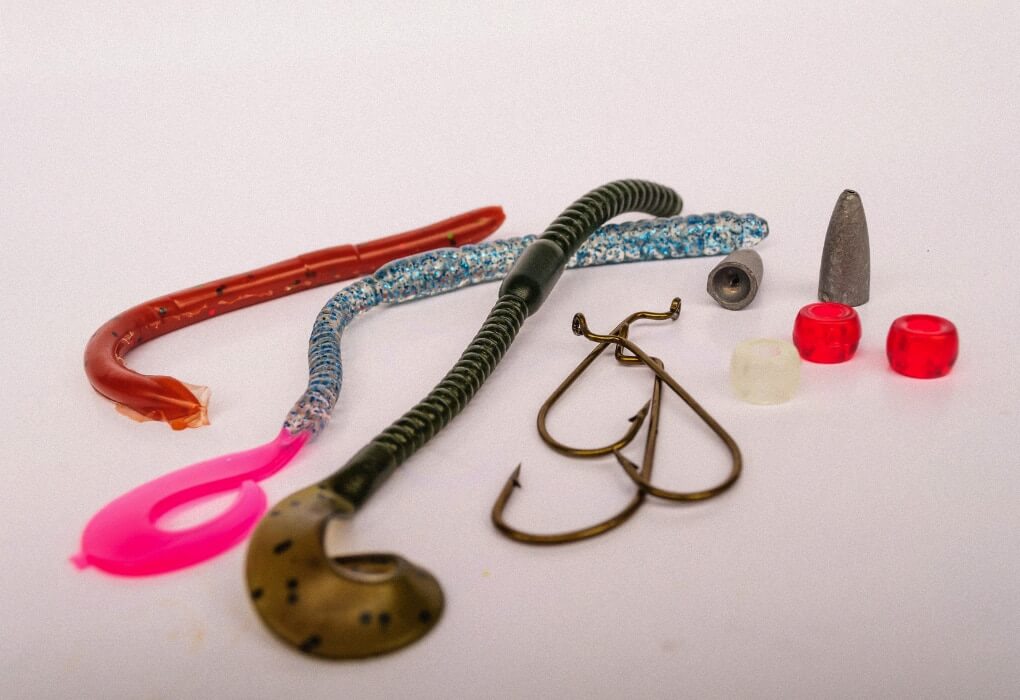
You can research the best bass lures all day long. However, you won’t really know what option is best until you start trying a few out. Bass change behavior all the time depending on the temperature.
Don’t get stuck on one specific lure and refuse to give others a try. Even if something worked very well last year, that doesn’t mean it will work equally as well this year.
The same can be said for finding bass. Just because the water temperature is technically warm enough for active eating doesn’t mean that all the bass in the lake will agree with you.
If you aren’t finding any bass in the shallows, it’s time to head to deeper waters.
5. Know Where Bass Spawn
In the spring, bass spawn. It’s one of the times when they are most active, making them considerably easy to catch. Most bass won’t spawn in early spring, as the temperature will still be too cold.
However, many may make trips to the spawning areas before they actually start spawning.
Knowing where the bass spawn can be considerably helpful. Bass tend to spawn in the same area each year, so ask other bass anglers to find out where they’ve been spawning.
The fishes’ behavior during the spring is largely driven by spawning.
Next, figure out where they spend the winter. Having high-quality fish finders and sonars works great on this mission. Otherwise, it can be challenging to figure out where the big fish are.
Once you have both of these locations, find the fastest way between them. Once the bass start moving towards their spawning ground, they’ll use a route.
Often, they’ll feed while on their way to the spawning ground. Bass move the most when the temperatures are high. Set up over this route, and you’ll likely get plenty of bites.
Frequently Asked Questions
What Is The Best Early Spring Bass Bait?
The best early spring bass bait is something with very subtle, slow action. You want the lure to move only gently, providing plenty of opportunities for the bass to bite.
Fish tend to be lazier when the waters are colder. Therefore, bass fishermen need to choose a bait accordingly.
What Do Bass Bite in Early Spring?
Bass bite slower-moving lures in the early spring. When the water is colder, a bass’s metabolism is slower. Therefore, the fish cannot digest food very fast, reducing the amount of energy they have.
The fish aren’t likely to chase after very active, exciting lures for this reason. Use something with slower action and be sure to keep the lure in the strike zone for a considerable amount of time.
Are Bass Deep or Shallow in Early Spring?
Sadly, there isn’t a way to know for sure whether bass will be in shallow or deep water in early spring. The temperatures during this time fluctuate a lot, and some bass miss the memo that it’s springtime.
You may find bass suspended on one day and then actively feeding the next. Water temperature plays a huge role in this. When the temperatures are warmer, the bass are usually more active and towards shallow waters.
Having electronics on your boat helps ensure that you can see where the fish are at any given time. Otherwise, it is nearly impossible to tell where the fish are.
Final Thoughts
Early spring bass fishing is one of the easiest times to catch these fish. The pre-spawn period often presents easy opportunities for taking big bass, especially as the waters get warmer.
However, early spring does bring some challenges.
For one, it can be hard to figure out where the fish are. Depending on the temperature, the bass may be in shallow waters, or they may still be hanging out in their winter home.
Checking the temperature when fishing is vital to figure out where the fish are.
However, electronics like fish finders can be extremely helpful during this season.
Be sure you choose the correct bass lures, too. Bass tend to be slower and lazier during the spring when the water is colder. Therefore, you’ll need a slower lure with subtle movement.
Hopefully, our tips should teach you how to catch bass in March.

